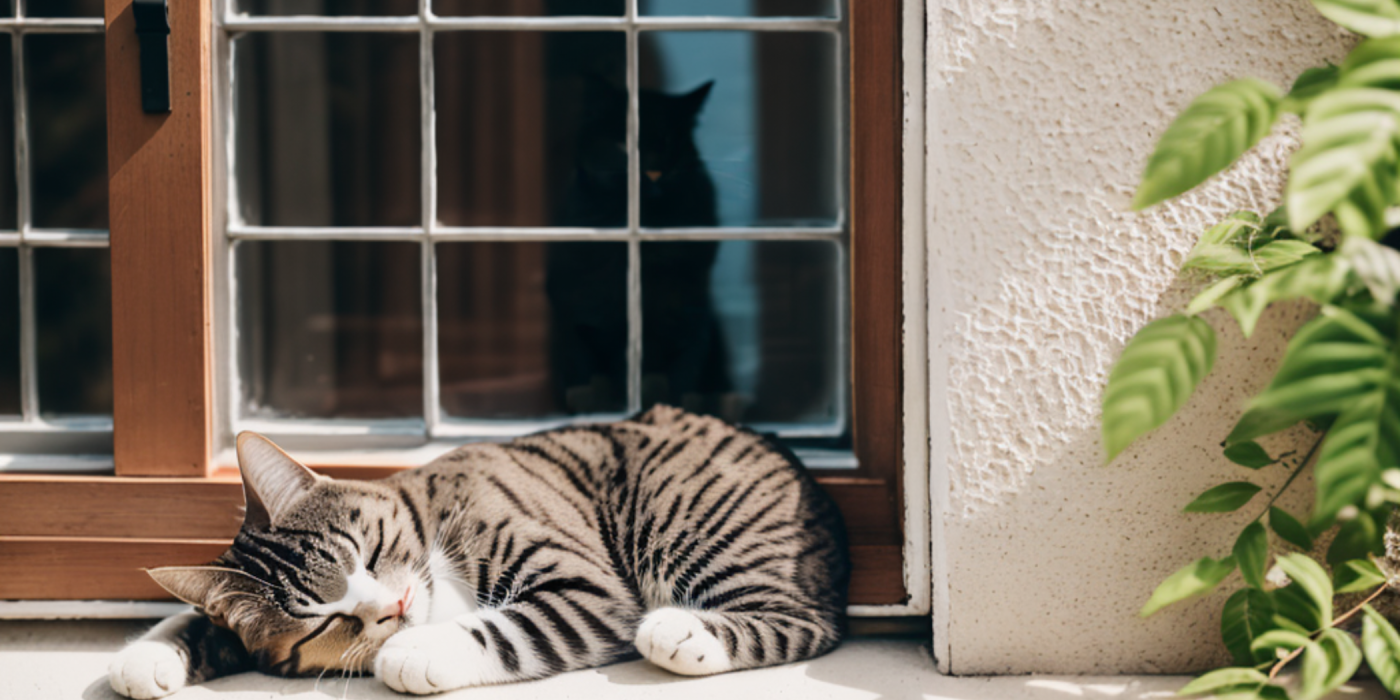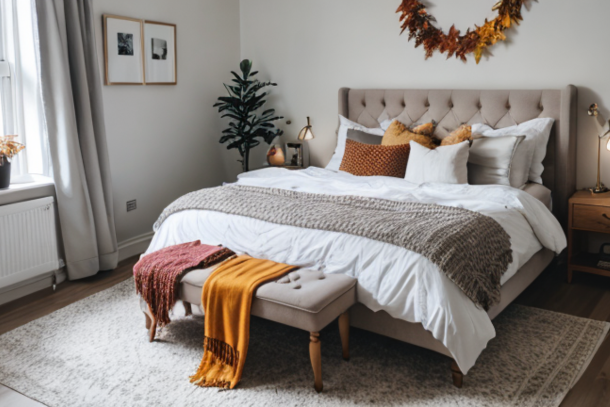The Benefits of Daytime Napping: How a Short Power Nap Can Improve Your Productivity, Mood, and Health

The Concept of Napping
At its simplest, napping refers to a short period of sleep, typically taken during daylight hours. While napping is often dismissed as a sign of laziness or lack of ambition, it's a deeply ingrained habit found in many species, humans included.
Daytime Napping Across Cultures
Across the globe, various cultures embrace the concept of the siesta or midday nap. In warmer countries, such as Spain and Mexico, a 'siesta' is often considered an integral part of the daily routine, while in Japan, the 'inemuri' or 'sleeping while present' is a socially accepted form of napping at work.
The UK Perception of Napping
In contrast, the UK's societal and professional cultures often hold a different perspective. Despite the potential benefits, daytime napping carries a stigma and is frequently associated with laziness or a lack of drive. It's a sentiment that overlooks the many physiological benefits napping can bring and one that we aim to challenge and overturn in this article.
The Unveiled Potential of Daytime Napping
The implications of daytime napping reach far beyond the temporary relief from tiredness. Properly harnessed, a brief period of rest can bring about improvements in productivity and mood regulation and even contribute to better overall health. This article aims to shed light on these often overlooked benefits, drawing on scientific research, expert advice, and practical strategies. So let's dive in and start rethinking our approach to the humble power nap.
Understanding Daytime Napping
What is Daytime Napping?
Daytime napping, simply put, is the act of taking a short sleep, or a 'kip', during the day. It's a practice that varies widely in duration and intent, leading us to distinguish between several types of naps.
Types of Naps
Planned napping involves taking a nap before you actually get sleepy. This technique is used when you know that you'll be up later than usual, or as a preventative measure to ward off expected fatigue.
Emergency napping, as the name suggests, is done when sudden tiredness impedes one's function, making a short sleep absolutely necessary.
Habitual napping is practised regularly, at the same time each day. Young children often nap habitually, as might a lorry driver taking a daily kip after lunch.
The Power Nap: Timing and Duration
When we talk about daytime naps, we often hear the term 'power nap'. The ideal power nap varies from person to person, but generally, a nap of around 20-30 minutes can refresh the mind and restore energy, with the added bonus of not leaving you feeling groggy.
The Role of Circadian Rhythm and Sleep Cycle
Our body operates on a 24-hour internal clock, known as the circadian rhythm, which affects our sleep and wake cycle. Ideally, a daytime nap should align with these natural rhythms to enhance alertness without disrupting night-time sleep. To that end, early to mid-afternoon is often the best time for a nap, especially if you're trying to avoid sleep inertia, that undesirable feeling of post-nap grogginess.
The Science Behind Napping and Productivity
The Link Between Napping and Productivity: A Review of Research Studies
Scientific research has shown that there is a tangible relationship between daytime napping and increased productivity. A study conducted by the University of Bristol and the University of California found that a brief nap during the day can boost learning capacity and aid with memory retention.
Another groundbreaking research published in 'Nature Neuroscience' showed that napping could actually restore the learning efficiency of the brain, almost like hitting a 'reset' button, thus preparing the brain for more learning and, therefore, increasing productivity.
The Impact of Napping on Cognitive Functions
Memory and Attention
Research has shown that napping plays a pivotal role in memory consolidation. A nap as short as six minutes can significantly improve long-term memory. Also, a study from the Saarland University in Germany reported that a 45 to 60-minute nap could improve memory recall by five-fold.
Attention, which is paramount to productivity, is also enhanced by a power nap. NASA's research found that a 40-minute nap improves alertness by 100% and overall performance by 34%.
Creativity
Napping also has the potential to boost creativity. The Roffwarg, Muzio, and Dement study suggested that REM sleep, which can be a part of a longer nap, stimulates regions of the brain associated with creativity.
Successful Individuals Who Champion Power Naps
Several successful individuals vouch for the power of naps. For instance, Winston Churchill, one of the greatest wartime leaders, was a firm believer in the afternoon nap. Similarly, Albert Einstein reportedly took daily naps, aside from his full night's sleep, to recharge his brain. Thomas Edison, Leonardo da Vinci, and Salvador Dalí also famously incorporated naps into their routines to bolster their productivity.
Daytime Napping and Mood Enhancement
Understanding Neurochemical Processes during Naps
Napping can, in fact, influence our mood by interacting with our neurochemical systems. When we enter a period of restful slumber, several processes take place in the brain. For instance, serotonin, often referred to as the "feel good" hormone, is known to increase during periods of sleep, including naps.
This is crucial as serotonin plays a significant role in regulating our mood and preventing feelings of anxiety and depression. Besides serotonin, napping also increases the levels of dopamine, the "reward hormone," which leads to feelings of happiness and contentment. By understanding the impact of these neurochemical processes, we can better appreciate the mood-enhancing benefits of a daytime snooze.
Scrutinising Scientific Studies on Napping and Mood
Several scientific studies affirm the correlation between napping and mood enhancement. Research conducted by the University of Hertfordshire found that short power naps could help people manage their emotions, increase their joy and lower their fatigue.
Moreover, a study by the National Sleep Foundation confirmed that a 20-30 minute nap could significantly enhance mood and performance. These studies, amongst others, provide compelling evidence that a well-timed power nap can be a simple yet effective mood booster.
Anecdotes from Nap Aficionados
Anecdotal evidence also supports the positive impact of naps on mood. Many individuals report that a brief daytime kip helps them manage their mood and mental health. For instance, John, a software engineer from Cambridge, shares, "On days when I manage to fit in a power nap during lunchtime, I notice a remarkable uplift in my mood. I'm less irritable, more patient and generally feel happier."
Thus, whether viewed through the lens of neurochemistry, scientific research, or personal experiences, the mood-enhancing benefits of daytime napping are clear and compelling.
The Health Benefits of a Short Nap
Impact of Napping on Physical Health
There's a growing body of evidence suggesting that napping can have substantial benefits for your physical health. Let's take a closer look at a few key areas.
Heart Health
Taking a short daytime nap can be beneficial for your heart. A study published in the British Journal of Cardiology found that individuals who indulged in a short midday nap had a significantly lower risk of heart disease compared to those who didn't nap. It seems that the restful period allows your cardiovascular system to recover from the daily stresses.
Stress and the Immune System
Daytime napping can be a potent tool for managing stress levels. When we sleep, our bodies release hormones that can counteract the impact of stress. Furthermore, a brief power nap can also give your immune system a boost. The Spanish Society of Primary Care Physicians reported a positive correlation between napping and immune system function.
Contribution to Overall Wellbeing and Longevity
Napping isn't just about the short-term benefits; it also contributes to overall wellbeing and longevity. A study by the University of Athens Medical School found that regular nappers had a 37% lower coronary mortality rate. This longevity link shows how napping could play a crucial role in a long, healthy life.
Addressing the Debate: Napping and Sleep Disorders
The relationship between napping and sleep disorders is a complex one. While napping may disrupt nighttime sleep for individuals with insomnia, those with conditions like narcolepsy might find scheduled naps to be an essential part of managing their condition. It's crucial, therefore, to understand your personal sleep needs and consult with a healthcare provider when considering adding naps to your routine.
Practical Tips for Incorporating Napping Into Your Day
Ideal Nap Conditions and Environment
To have a productive and refreshing nap, your surroundings play a critical role. Find a quiet, dimly lit space where you can relax without being disturbed. If you're in a noisy environment, consider using earplugs or a white noise machine to block out distracting sounds. A comfortable temperature — around 16-18°C — is also essential. If possible, lie down; if not, a reclining chair will do.
Pro tip: Invest in a good eye mask to block out light, further enhancing your nap quality.
Techniques to Wake Up Refreshed, Not Groggy
The key to waking up from a nap feeling alert rather than groggy is all about timing. Limit your nap to 10-20 minutes for a quick boost of alertness or a full 90 minutes to complete a full sleep cycle, avoiding grogginess. Utilise alarm clocks or nap apps to ensure you don't oversleep.
Pro tip: To shake off any residual sleepiness, splash some cold water on your face or do a few minutes of light exercise after waking up.
Balancing Naps with Night-Time Sleep
Ensure your daytime snooze doesn't interfere with your night-time slumber. If you find it harder to fall asleep at night post-nap, consider limiting the length of your nap or napping earlier in the day.
Pro tip: Keep a sleep diary to monitor your sleep patterns and adjust your napping habits accordingly.
Overcoming Societal Stigma and Workplace Obstacles
In a society where 'sleeping on the job' might be frowned upon, it's important to advocate for the scientifically-backed benefits of napping. Discuss with your manager or HR the potential for designated nap spaces or 'wellness breaks' throughout the day.
Pro tip: Encourage a company-wide discussion on sleep health and the benefits of napping, fostering a more nap-friendly work culture.
The Power and Potential of Daytime Napping
A Brief Recap
In this article, we've taken a deep dive into the fascinating world of daytime napping. By shining a spotlight on an array of scientific research and studies, we've revealed the multifaceted benefits that short power naps can confer. From bolstering your productivity through improvements in memory, creativity, and attention, to acting as a mood enhancer by positively influencing neurochemical processes, napping truly is a wonder to behold. Furthermore, we've also shed light on the physical health benefits, demonstrating how a brief nap can help with heart health, stress management, and even fortifying the immune system.
Embrace the Power Nap
Now, dear reader, the ball is in your court. We encourage you to experiment with incorporating short naps into your daily routine. Whether you're at home, in the office, or anywhere you can find a quiet corner, the potential rewards are significant. Of course, every individual's needs and responses may differ, so be patient and give your body time to adjust to this new aspect of your routine. Remember the practical tips we provided, and be mindful of creating the right environment for your power nap.
A Call for Further Research and Greater Acceptance
Lastly, we implore researchers and scholars alike to continue delving into the science of napping. There's still much to uncover about this delightful practice. But it isn't just the scientific community that needs to step up. We need greater societal and professional acceptance of daytime napping in the UK. It's high time we shed the stigmas and the stereotypes and embraced the nap for the incredible tool that it is for enhancing our wellbeing and productivity.
Related to this article are the following:
- Unlock Your Athletic Potential: The Power of Sports Massage for Performance and Recovery
- Aromatherapy Massage: The Journey to a Sensory Nirvana
- The Power of Relaxing Music: A Guide to Enhancing Your Well-Being
- The Invigorating Allure of Nature Walks
- Experience the Warmth: Uncovering the Benefits and Techniques of Hot Stone Massage
I do hope you have enjoyed this article and hope that you will subscribe to my newsletter so you can get the latest information about all things naturally relaxing.
Stay in touch, join the Naturally Relaxing Newsletter
Newsletter Signup
Post Your Comments
or post as a guest
Be the first to comment.
Latest articles in Sleep

The Power of Waterfall Sounds for Enhanced Sleep Quality

Embracing Autumn: Sleep Routines for the British Season

Autumnal Slumber: Understanding Our Seasonal Sleep Patterns

Crafting the Ideal Autumnal Sleep Sanctuary

Savouring Autumn: Foods to Enhance Your Sleep






